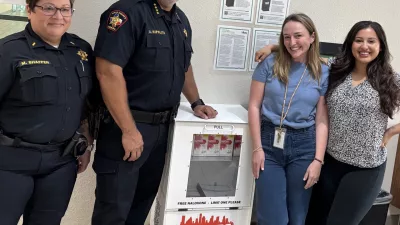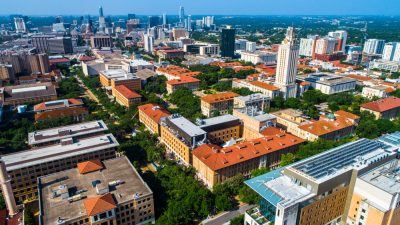Austin Mayor Kirk Watson, in partnership with Workforce Solutions Capital Area, Austin Transit Partnership and CapMetro, recently shared study findings and actions for growing the region’s mobility and infrastructure workforce to meet the demands of upcoming capital projects during the ‘Moving Forward: Mobility & Infrastructure Workforce Summit’ held in Austin last week.
The two-day summit featured findings from Central Texas’ first-ever mobility workforce study, which revealed that large capital projects will create 10,000 mobility and infrastructure jobs—including transit operators, mechanics and engineers—annually for the region. Transit projects like Austin Light Rail and MetroRapid expansion–part of Project Connect transit vision–and the I-35 and airport expansions, will double the number of mobility and infrastructure occupations in the region, from a 38% increase under business-as-usual circumstances to an 81% increase with the planned projects.
“On the upside, what this data shows us is that career pathways are possible and abundant in this industry, but on the flip side we can see that even the deepest wells of talent will be spread thin if we don’t aggressively broaden our skills pipeline,” Tamara Atkinson, president and CEO of Workforce Solutions Capital Area, said.
A Mobility & Infrastructure Leadership Group appointed by Mayor Watson and Travis County Judge Andy Brown has been working over the last several months to develop an action plan to bring more current and future residents into mobility and infrastructure jobs in Central Texas.
“I’m encouraged by the early strategy and policy considerations that have come out of the Leadership Group and the Moving Forward Summit, like identifying federal and state funding streams to support skills training and incentivizing job creators to do their part as well,” Austin Mayor Kirk Watson said. “Collaboration with our neighbors in San Antonio allows us a broader scope to co-create solutions to challenges that impact the whole region.”
Additional key findings from the mobility workforce study include:
Women make up just 14% of the mobility and infrastructure workforce. Increasing the share of women in general construction and skilled trades roles to their overall share in the regional economy would cover 41% of the total projected demand for new workers.
There is no consistent standard training period for mobility and infrastructure training. Programs vary in duration with little consistency, ranging from as little as six weeks to more than two years.
There is a projected 4,000 annual training gap that will exacerbate skill shortages. Programs need to be scaled and connected.
Improved prevailing wage policies can be used to attract and retain workers. Six in 10 mobility and infrastructure workers earn a prevailing wage of $22 an hour.
“The majority of San Antonio’s Ready to Work program participants are women of color living at or below the poverty line, highlighting the fact that there isn’t one issue or challenge that wouldn’t benefit from more women being engaged with it,” San Antonio Mayor Ron Nirenberg said. “We need to be intentional in our efforts to shift long-standing gender norms and spotlight the mobility and infrastructure career opportunities that are available to women from Austin to San Antonio.”





